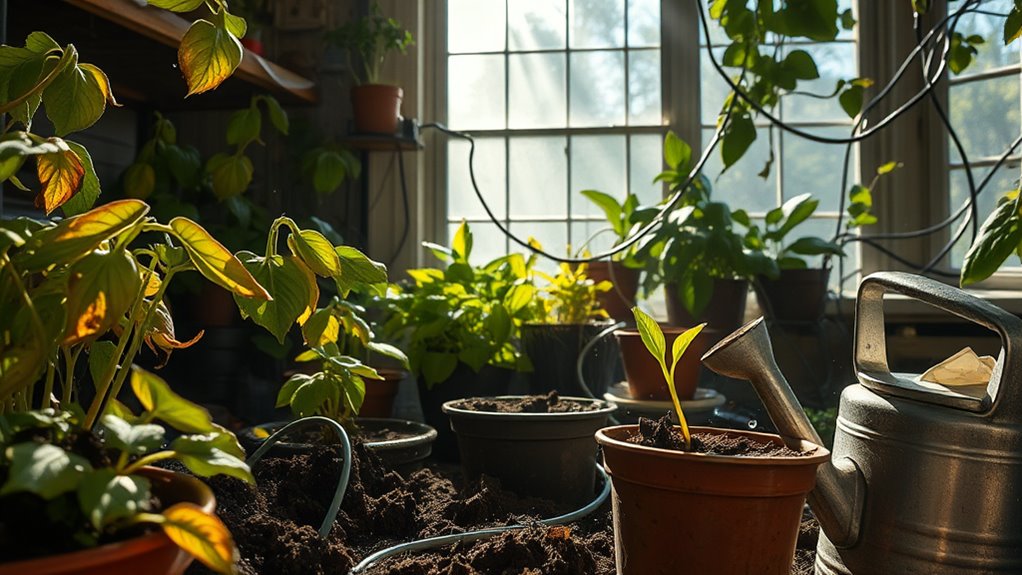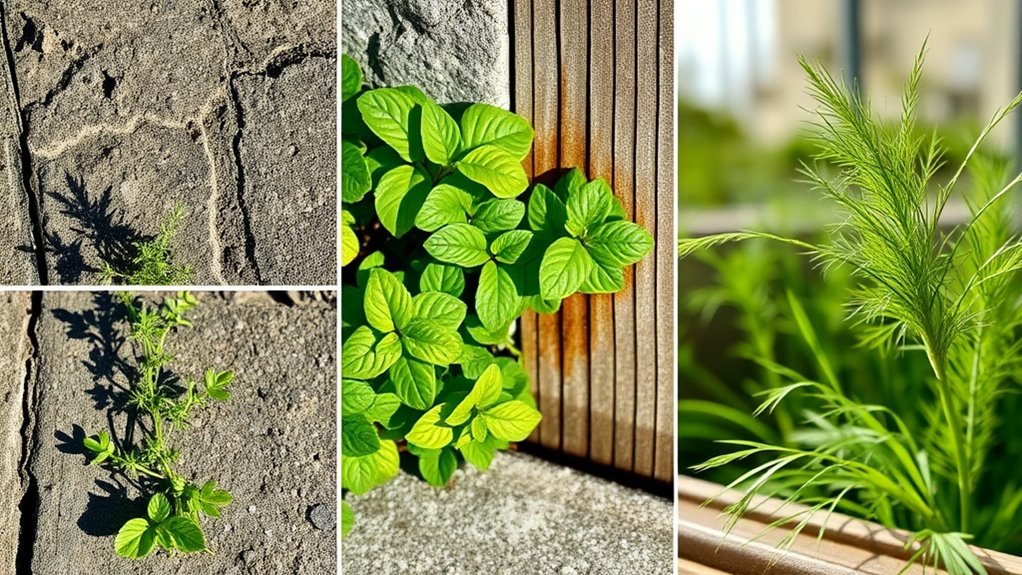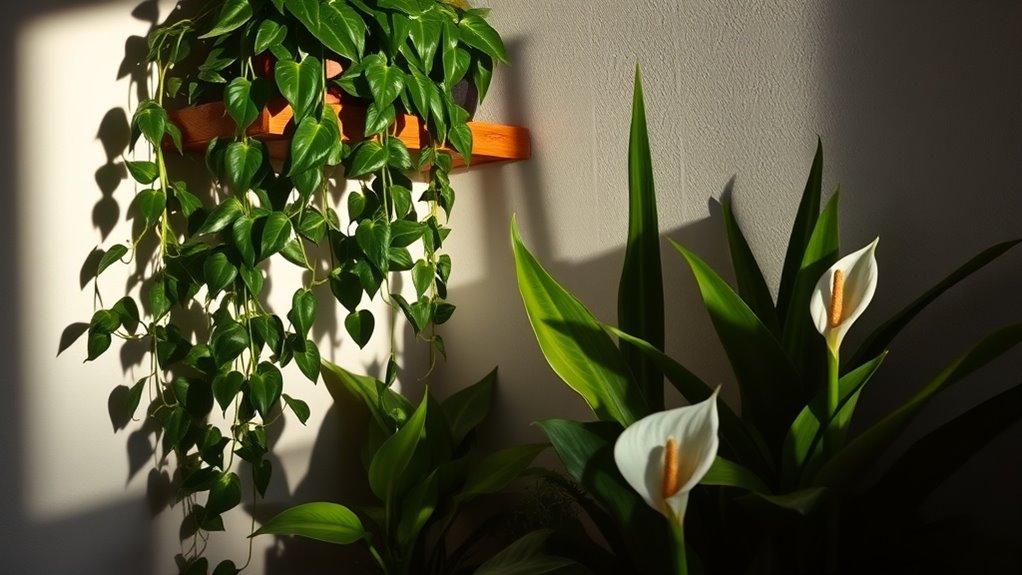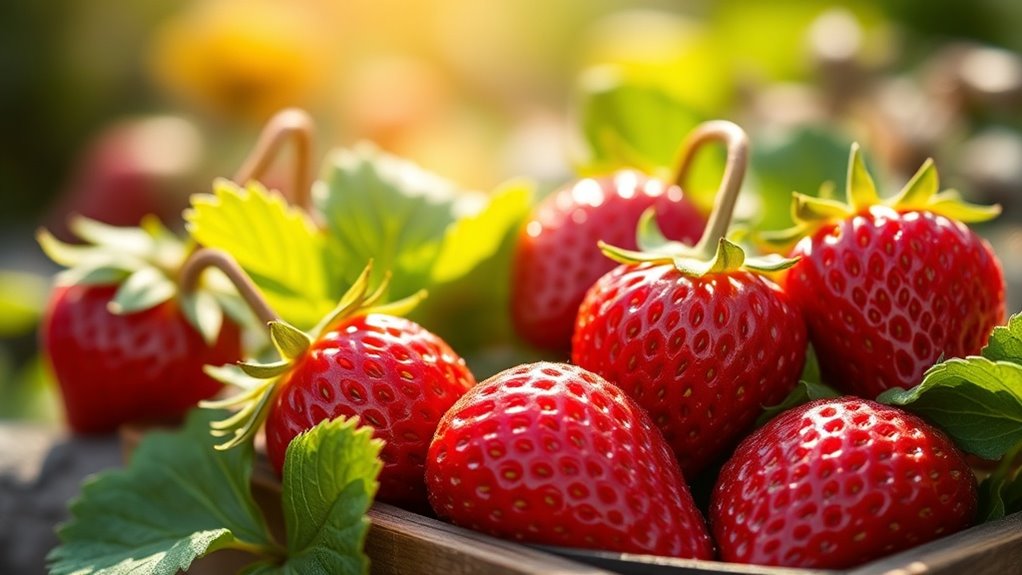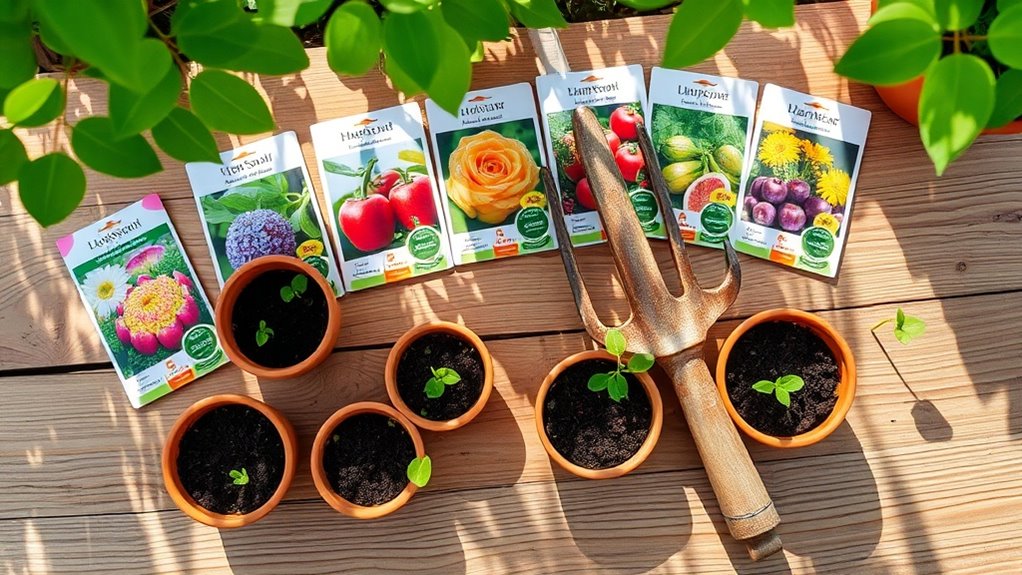Why Most Indoor Gardens Fail by Month 2 (And How to Fix It)
Imagine you’ve set up an indoor garden filled with vibrant herbs, but by week eight, they’re wilting and the soil smells foul. This scenario isn’t uncommon, as many indoor gardens fail by their second month due to a mix of factors. Identifying the causes—like inconsistencies in watering, light levels, and nutrient supply—can make all the difference. So, what steps can you take to ensure your plants thrive rather than struggle?
Overwatering and Root Rot
Even if you think you’re giving your indoor plants the care they need, overwatering can be an insidious problem. This issue often leads to root rot, suffocating your plants’ roots and causing indoor garden failure. Signs include yellowing leaves and a foul odor from the soil. Adjust your watering schedule, ensuring the soil dries between sessions, and preserve your green oasis. To avoid this, it’s essential to understand proper hydration techniques that can help keep your plants thriving.
Inadequate Light Conditions
While you might believe your indoor garden is thriving, inadequate light conditions can quietly undermine your efforts.
Insufficient light limits photosynthesis, leading to weak growth, yellowing leaves, and ultimately stunted plants.
To counter this, assess your light sources. Invest in full-spectrum LED grow lights, position them correctly, and monitor daily light exposure. Additionally, consider selecting herbs for low light that are more suited for your indoor environment.
Providing adequate light is essential for your indoor garden’s success.
Poor Soil Quality
Inadequate light isn’t the only factor that can thwart your indoor gardening ambitions; poor soil quality can be equally detrimental.
If your soil lacks nutrients, drainage, or structure, it hampers root development and plant health. To remedy this, choose a high-quality potting mix tailored for indoor plants, ensuring it contains essential elements like organic matter and proper aeration for optimal growth. Additionally, the soil should include essential soil ingredients that provide vital nutrients to support your plants throughout their growth cycle.
Pest Infestations
Although you might focus on nurturing your plants, pest infestations can quickly disrupt your efforts and compromise plant health.
Common culprits like aphids and spider mites thrive in indoor environments. Regularly inspect leaves and stems, and consider introducing beneficial insects or organic pesticides if needed. Incorporating an effective organic pest mix can significantly enhance your pest control methods.
Early detection and prompt action are crucial to prevent severe damage and ensure your indoor garden remains thriving.
Lack of Nutrients
Pest infestations can cause significant stress in your indoor garden, but another common issue is the lack of vital nutrients that plants require for healthy growth.
To ensure your plants flourish, consider the following:
- Test your soil regularly.
- Choose appropriate fertilizers.
- Provide micronutrients like magnesium and iron.
- Avoid over-fertilization.
- Follow a feeding schedule based on plant type.
Creating all-natural fertilizer can be an effective solution to boost nutrient levels.
Proper nutrient management is crucial for thriving plants.
Ignoring Plant Space Requirements
Understanding plant space requirements is essential for your indoor garden’s success.
Plants compete for light, nutrients, and air circulation, so overcrowding can stunt growth and lead to disease. Research each species’ spacing needs and plan accordingly.
By providing adequate room for growth, you’ll enhance your garden’s health and productivity, allowing your plants to flourish rather than struggle.
Prioritize space to maximize your yields.

